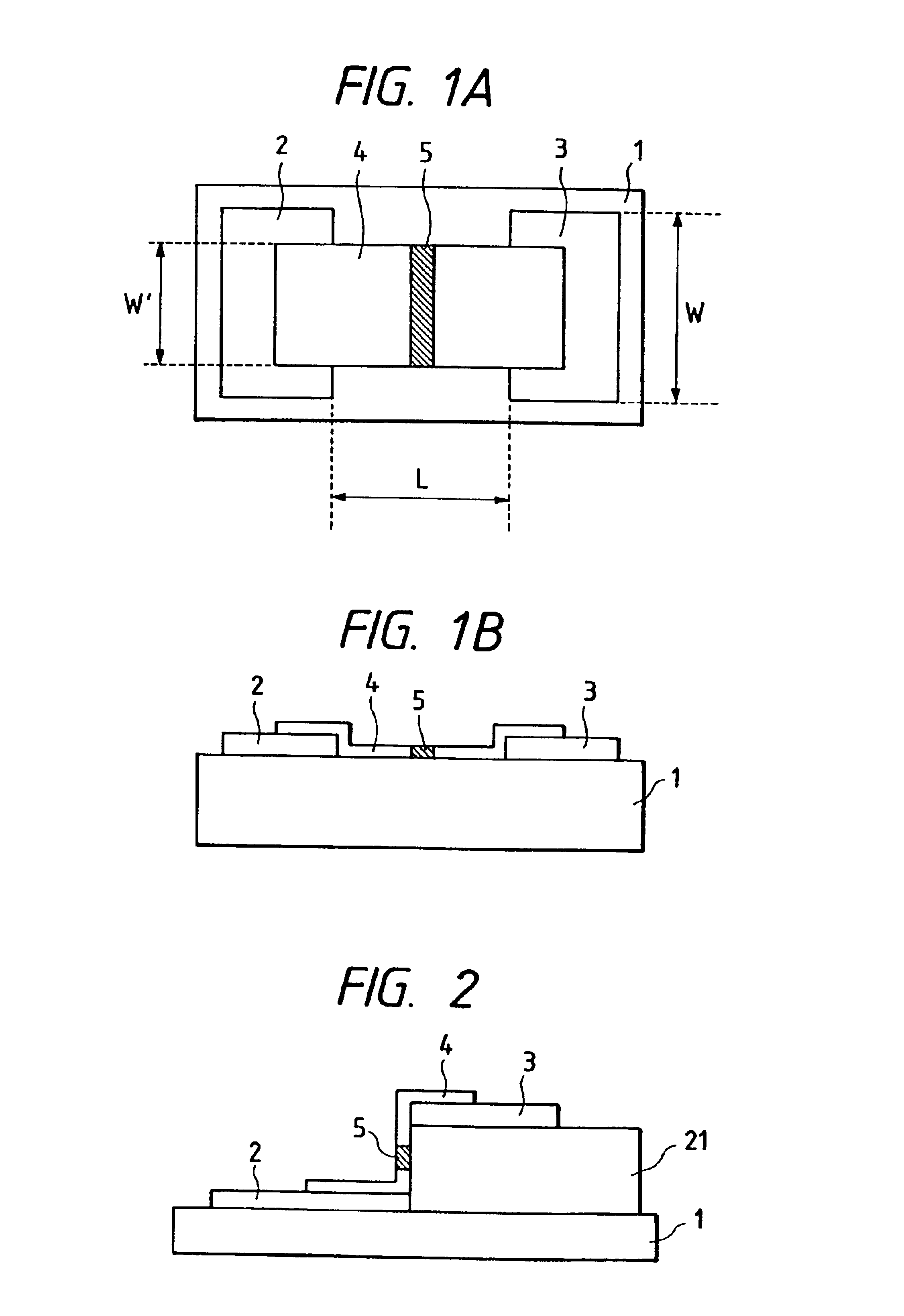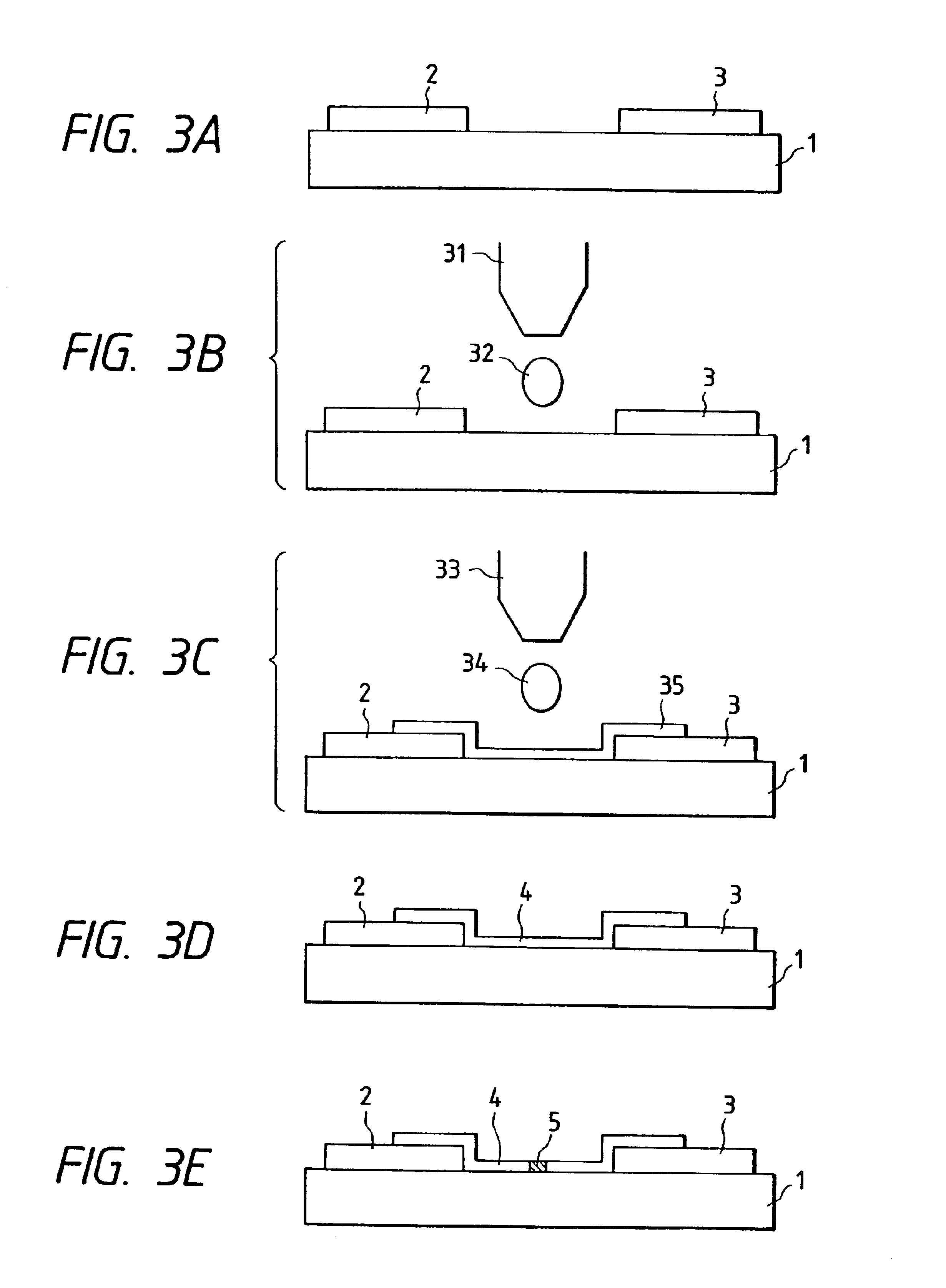Manufacturing method for electron-emitting device, electron source, and image-forming apparatus
a manufacturing method and technology of an electron-emitting device, applied in the manufacture of electrode systems, electrodes, electrode tubes/lamps, etc., can solve the problems of photo-lithographic processes, extremely high cost, irregular etc., and achieve the goal of reducing the thickness of electroconductive films and minimizing the irregularity of electrical properties such as sheet resistance values
- Summary
- Abstract
- Description
- Claims
- Application Information
AI Technical Summary
Benefits of technology
Problems solved by technology
Method used
Image
Examples
embodiment 1
[0180]And electron-emitting device of the type illustrated in FIGS. 1A and 1B was manufactured as an electron-emitting device. FIG. 1A is a plan view illustrating the construction of the present electron-emitting device, and FIG. 1B is a cross-sectional view thereof. In FIGS. 1A and 1B, reference numeral 1 denotes an insulating substrate, reference numerals 2 and 3 denote a pair of device electrodes, reference numeral 4 denotes a film including an electron-emitting region, and reference numeral 5 denotes an electron-emitting region. In the Figures, L represents the spacing between the device electrode 2 and the device electrode 3, W represents the length of the device electrodes, d represents the thickness of the device electrodes, and W′ represents the width of the device.
[0181]The manufacturing method of the electron-emitting device of the present invention will now be described with reference to FIGS. 19A through 19D. A quartz glass plate was used as the insulating substrate 1, a...
embodiment 2
[0194]Polyvinyl alcohol (reffered to PVA) was added to water, and the viscosity of the solution was adjusted to be 5 centipoise in viscosity, which was then deposited onto part of the electrodes by means of a bubble-jet type ink-jet apparatus, then heated at 100° C. for 10 minutes, then cooled to room temperature again. Following this, 100 devices of the present electron-emitting device were fabricated in the same manner as with Embodiment 1. The irregularities in the film thickness of the electroconductive film are shown later in Table 1. Further, when a device voltage was applied between the electrodes 2 and 3 of the present electron-emitting device by means of the measuring / evaluation apparatus described in Embodiment 1, the electron emission under 12V of device voltage was an average of 0.2 μA, and an electron-emission efficiency of 0.05% was obtained. The irregularity of Ie between the devices was 6%.
embodiment 3
[0195]Droplets of the following solutions of aqueous resin solution and organic metal compound solution were deposited as with the Embodiment 2, and electron-emitting devices 3.1 thorough 3.4 were fabricated. Table 1 shows the evaluation results regarding the film thickness and the distribution thereof. The evaluation method was the same as with the Embodiment 1.
PUM
 Login to View More
Login to View More Abstract
Description
Claims
Application Information
 Login to View More
Login to View More - R&D
- Intellectual Property
- Life Sciences
- Materials
- Tech Scout
- Unparalleled Data Quality
- Higher Quality Content
- 60% Fewer Hallucinations
Browse by: Latest US Patents, China's latest patents, Technical Efficacy Thesaurus, Application Domain, Technology Topic, Popular Technical Reports.
© 2025 PatSnap. All rights reserved.Legal|Privacy policy|Modern Slavery Act Transparency Statement|Sitemap|About US| Contact US: help@patsnap.com



